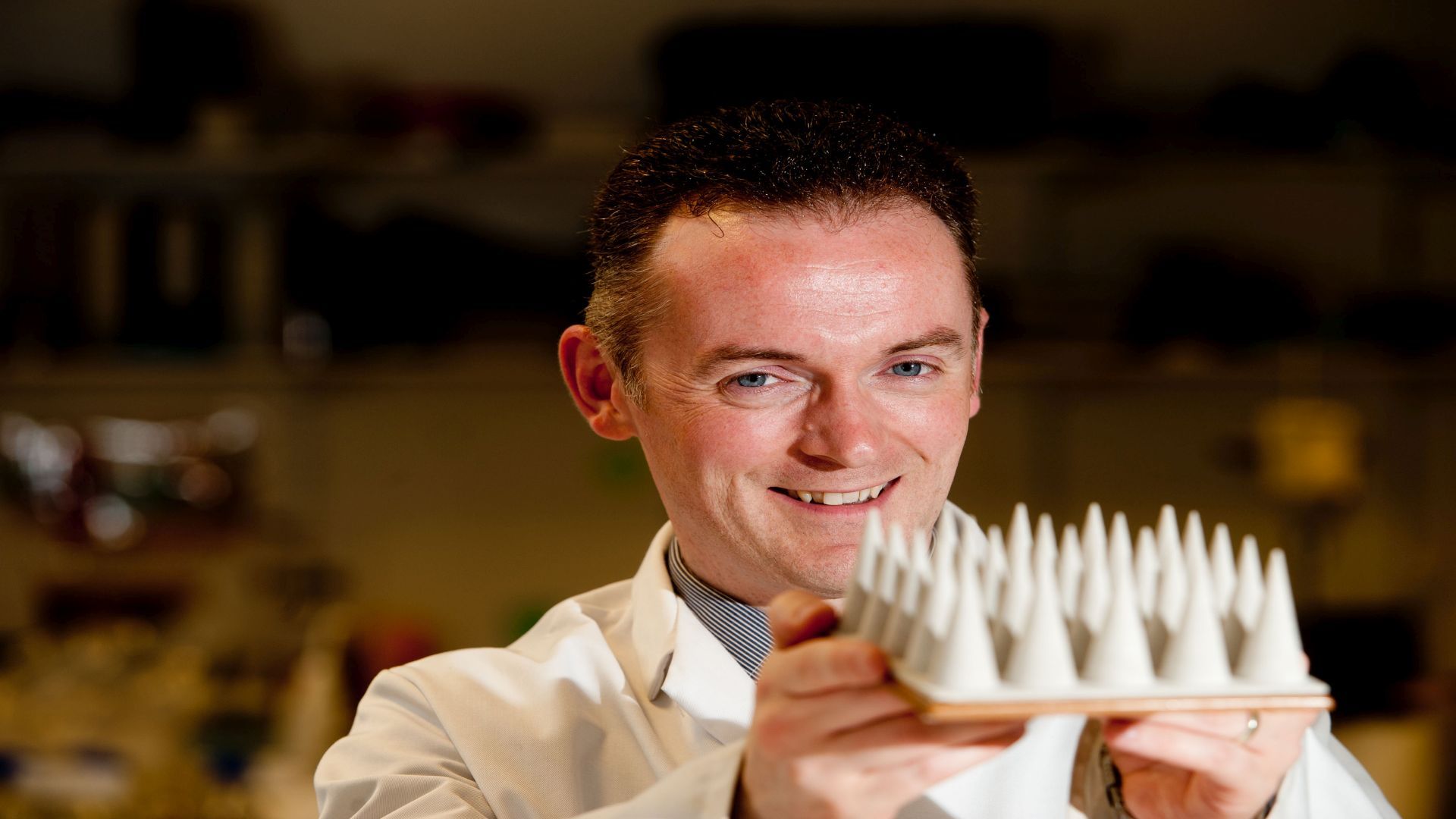Professor's Skin Patch Offers Solution to Antibiotic Resistance Crisis


Professor Ryan Donnelly with a large scale of his microneedles. Courtesy of Queen's University
A team of researchers from Queen’s University Belfast, led by Ryan Donnelly, professor of pharmaceutical technology, is developing a new type of skin patch (microarray patch) that administers drugs directly into the bloodstream through thousands of individual “microneedles” which are being tested as a possible answer to the antibiotic resistance crisis.
These “microarray patches” are a discreet, easy-to-use technology that contains an array of tiny projections that painlessly penetrate the top layer of skin to deliver a drug.
Antibiotic resistance represents the biggest threat to health today. Oral administration of antibiotics contributes significantly to development of antibiotic resistance, due to interaction of antibiotics with bacteria inhabiting the human gut. Injection of antibiotics significantly reduces development of resistance amongst gut bacteria relative to oral administration, especially if the antibiotic is predominantly excreted through the kidneys. Accordingly, avoiding antibiotic exposure of the gut bacteria may considerably extend the useful lifespan of existing antibiotics, providing vital time for development of new antibiotics.
Donnelly is a registered pharmacist and researcher from the School of Pharmacy at Queen’s University, whose work focuses on novel approaches to administration of difficult-to-deliver medicines. “One of the biggest problems is that the huge majority of the drugs are taken orally," he says. "This means that a small quantity of the compound often finds its way into the colon, creating the perfect breeding ground for drug-resistant bacteria. However, it is clearly impractical to expect patients to inject themselves at home, especially considering that more than 20 percent of people are needle-phobic. Admitting patients to hospital every time they need an antibiotic would quickly bankrupt healthcare providers.”
Donnelly and his team hope to develop and evaluate a unique antibiotic patch that can bypass the gut bacteria and extend the useful lifespan of currently-available antibiotics. On the surface of the antibiotic patch will be tiny needles that painlessly pierce the skin, turning into a jelly-like material that keeps the holes open and allows delivery of antibiotics into the skin for absorption into the bloodstream, thus bypassing the gut bacteria.
Donnelly comments, “We hope to show that this unique antibiotic patch prevents resistance development. If we are successful, this approach will significantly extend the lifespan of existing antibiotics, allowing time for development of the next generation of antibiotics. In doing so, this work has the potential to save many lives.”
Placebo patches have already been successfully tested on ten volunteers in a study published in the International Journal of Pharmaceutics. The next step is to show that they can deliver the correct dose of antibiotics, before testing them against drugs in capsule form.
“For the first time, we’re in control of the rate at which medicine goes into the skin,” Donnelly adds. “I started thinking: what are the big health challenges we can use this to address? There probably isn’t a bigger health challenge today than antibiotic resistance.”
Scientists hope that the drug technology could be used to treat bacterial infections within five years following further tests.
Donnelly says, “This exciting project is very much in line with the research ethos of Queen's University, which is centered on Global Challenges. Antibiotic resistance remains a global health emergency. Antibiotic resistance leads to longer hospital stays, higher medical costs and increased mortality. With this discovery, we hope to change the lives of people across the world.”
The Wellcome Trust, Britain’s largest medical research charity, will donate £900,000 to the project next year.
Source: Queen's University Belfast
Robust infectious disease surveillance, including rapid subtyping of influenza A, is essential for early detection, containment, and public health reporting of novel viral threats.